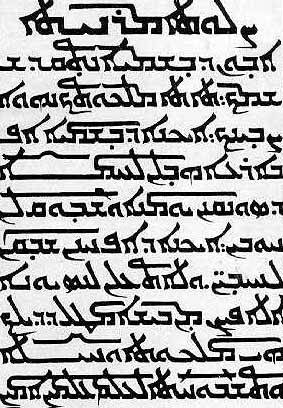
Aramaic is a language belonging to the West Semitic subdivision of the Semitic subfamily of the Afro Asiatic family of languages. After the Jews were defeated by the Babylonians in 586 B.C., they began to speak Aramaic instead of Hebrew. They retained Hebrew as the sacred language of their religion. Although Aramaic was displaced officially by Greek after the coming of Alexander the Great, it held its own under Greek domination and subsequent Roman rule. Aramaic was the language of Jesus. Following the rise of Islam in the 7th century A.D., however, Aramaic began to yield to Arabic, by which eventually it was virtually replaced.
In the course of its long history the Aramaic language broke up into a number of dialects. Grammatically, Aramaic is very close to Hebrew. The Aramaic alphabet was attested in the 9th century B.C. After approximately 500 B.C. its use became widespread in the Middle East.
Parts of the books of Ezra and Daniel in the Bible were written in an Aramaic dialect, as were some notable Jewish prayers, such as the kaddish.
Papias of Hierapolis is quoted by Eusebius of Caesarea as affirming that Evangelist Matthew first "wrote the sayings of Jesus" in Aramaic.

By Paul Flanagan and Robert Schihl.
Unless otherwise noted, all Scripture texts are taken from the New American Bible with Revised New Testament and Revised Psalms © 1991, 1986, 1970 Confraternity of Christian Doctrine, Washington, D.C. and are used by permission of the copyright owner. All Rights Reserved. No part of the New American Bible may be reproduced in any form without permission in writing from the copyright owner.
Email comments to pdflan@catholicapologetics.org
Last Updated: September 12, 2004